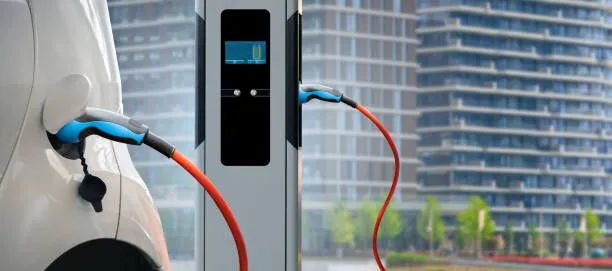


110V vs. 220V EV Charging: What You Need to Know Powering the Future of Mobility
As a leading EV charger manufacturer in China, Topper Company provides dependable electric vehicle charging stations and comprehensive charging solutions.
Electric vehicles (EVs) are changing the way we drive—and charge. If you’re new to EVs or planning to install a charger at home, understanding the difference between 110V (Level 1) and 220V (Level 2) charging is essential. The voltage you choose affects everything from how long your car takes to charge to how much convenience you’ll enjoy day-to-day.
Level 1 charging uses a standard 110V household outlet—the same one you use for a lamp or toaster. Most EVs include a Level 1 charger, making this the easiest way to get started.
Charging speed: Adds about 3–5 miles of range per hour.
Charging time: Up to 72 hours for a full charge, depending on battery size.
Pros: No installation required; low cost.
Cons: Extremely slow—not ideal for daily drivers.
Level 1 charging works best for plug-in hybrids or EV owners who drive short distances and have overnight access to charging.
Level 2 chargers use a 220V or 240V outlet—like those for dryers or ovens—and offer much faster charging. These are the most common chargers installed in homes and public charging stations.
Charging speed: Adds 25–35 miles of range per hour.
Charging time: Typically 4–10 hours for a full charge.
Pros: Fast, reliable, and suitable for daily use.
Cons: Requires professional installation and a higher upfront cost.
Level 2 chargers are ideal for drivers with longer commutes, larger EV batteries, or multiple trips per day.
| Feature | Level 1 (110V) | Level 2 (220V) |
|---|---|---|
| Voltage | 110–120V | 220–240V |
| Range per Hour | 3–5 miles | 25–35 miles |
| Full Charge Time | 24–72 hours | 4–10 hours |
| Installation Needed | No | Yes |
| Best For | Light use, hybrids | Daily driving, long trips |
Yes—many homes have a 220V outlet in the garage or laundry room. With a proper adapter and a portable Level 2 charger, you may be able to use it. However, it’s important to:
Check amperage limits.
Use only safe, UL-listed equipment.
Consult a licensed electrician.
Never attempt to convert 110V to 220V with a simple plug adapter—it’s dangerous and can damage your vehicle or electrical system.
Use 110V if you drive under 30 miles per day and have time to charge overnight.
Install 220V if you need faster, more consistent charging and plan to keep your EV long term.
For most full-time EV drivers, investing in a Level 2 charger offers better performance and convenience—and many utilities offer rebates to help with costs.
Choose the setup that matches your lifestyle, and you’ll enjoy the full benefits of driving electric.Know more about Google SEO Directory
